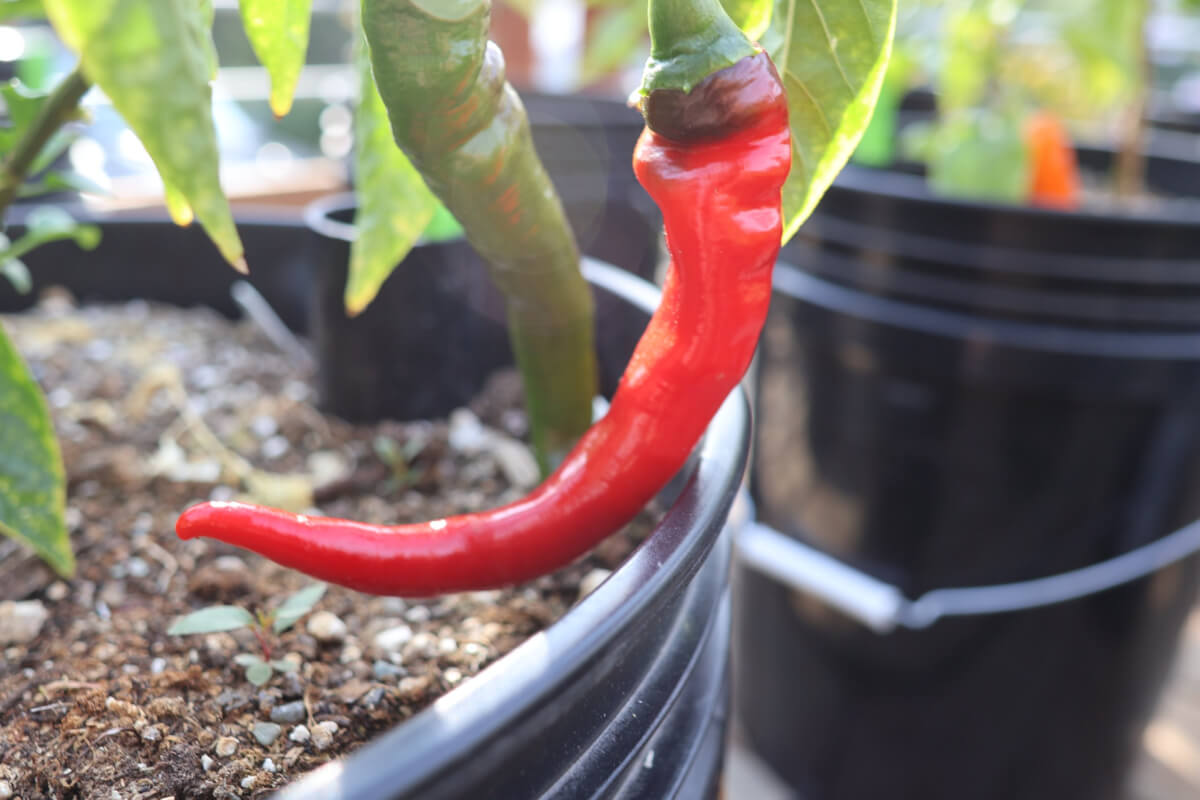Some of you might wonder if you can overwinter pepper plants in the far north. Absolutely, you can! We’ve done it in years past, so we’re going to share what we know about it. Similar techniques can be used for most perennials grown in locations where it’d be “technically” impossible to overwinter them.
If you weren’t aware, all pepper plants are perennials. Unfortunately for us northerners, they only perennialize in much, much warmer climates. Think zone 9 and above. You can “sort of” simulate that in the north, but there’s definitely some things you need to care for in order for the process to work. The benefit of doing so is that second year+ plants will be much larger and more vigorous than first year grown plants.
What gives us a little insight into how they should be treated for overwintering is that perennial zone. Zone 9 would feature minimum low temperatures of 20 to 30 degrees Fahrenheit. What this tells us is you need a conditioned space that goes no lower than 20 degrees and we’d even suggest not flirting with temperatures that low. Reason being, that’s the absolute minimum that the plant can’t survive. As we know from the challenges across many subarctic hardy perennials, those “lowest possible temperatures” are a bit risky territory.
For some people, you might have a semi-heated garage that you can ensure won’t drop into temperatures the plants will not survive. If you do this, be aware that simply opening your garage door could bring temperatures down to threatening levels, especially if you do it for extended times, so it might not be the best location. Alternatively, you can simply use your indoor space to ensure you won’t get cold temperatures. You want pretty much the coolest room in your home.
To start the overwintering process, you want to stop watering your plant. You’ll observe that the leaves will start to die off and the plant will suffer. Don’t worry, this is exactly what we want! Any leaves remaining on the plant will be a liability for overwintering, we’re trying to force the plant into a dormant state. Once most of your leaves have fallen, you want to aggressively prune back the plant. We suggest topping the plant, leaving about three sets of branches remaining. It’ll sort of look like a barren stick figure, which is exactly the state you want to overwinter the pepper plant in.
You will want to occasionally water your plant, but not heavily over the winter. You’re trying to give it “just enough” water to survive, but not enough to thrive. Every two to three weeks or so. As for light, we’ve always relied on ambient indoor lighting. You definitely don’t want to put it under grow lights as that will keep it in an active, growing state.
As for the following spring, about 8 to 12 weeks before last frost, that’s when you want to start caring for the plant again. Put it under your grow lights, fertilize it and start regularly watering it again. Raise it along with any other seeds you might be raising. You’ll notice that it’ll come back pretty strongly and your second year pepper plant will soon be better than ever. You can repeat this process as long as you like and can keep the plant alive!


